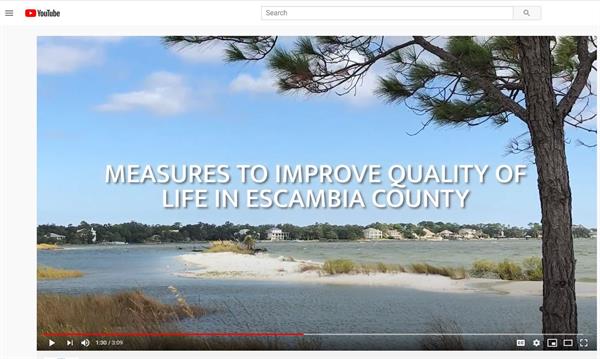On April 20, 2010, the Deepwater Horizon drilling platform exploded, killing 11 workers. Approximately 134 million gallons of oil was released into the Gulf of Mexico, oiling 1,300 miles of shoreline across five Gulf states, resulting in the largest oil spill in U.S. history.
In Florida, Escambia County received 97% of the oiling impact. Both the environment and the economy of the entire U.S. Gulf Coast took a substantial hit. Over the summer of 2010, it was common to see cleanup crews in place of visitors on Pensacola Beach and Perdido Key.
BP, Transocean and Anadarko were held criminally liable for their negligence. In 2012, President Obama signed the RESTORE Act into law, directing 80% of penalty payments back to the Gulf Coast for restoration. In 2016, a $20.8 billion settlement agreement was reached with BP, with payments extending through 2031.
Deepwater Horizon restoration is implemented through several funding streams, including the RESTORE Act, the Natural Resource Damage Assessment, and the National Fish and Wildlife Foundation Gulf Environmental Benefit Fund, with economic development funded through Triumph Gulf Coast. Over $200 million has been invested in projects in Escambia County to date from Deepwater Horizon restoration funding. Project highlights include:
RESTORE Direct Component (Pot 1):
RESTORE Act Pot 2:
- Three projects totaling $6 million has been funded through Pot 2 of the RESTORE Act through the Gulf Coast Ecosystem Restoration Council. Those projects include design of the Pensacola Bay Living Shoreline Project, design of the Bayou Chico Contaminated Sediment Remediation Project, and implementation of the Beach Haven Phase II Septic to Sewer and Stormwater Improvement Project.
RESTORE Act Pot 3:
- RESTORE Act Pot 3 funding is split evenly among the Florida Gulf Coast counties and is administered by the Gulf Consortium. $12.6 million has been allocated to implementation of the Bayou Chico Contaminated Sediment Remediation Project.
Natural Resource Damage Assessment:
- NRDA projects include Innnerarity Point Park, Mahogany Mill Boat Ramp, Wilson Robertson Boat Ramp, Pensacola Beach Dune Restoration, Perdido Key Dune Restoration, Carpenter Creek water quality improvements and park amenities, artificial reef deployment, and the Pensacola Bay Ferry Service.
National Fish and Wildlife Foundation:
- NFWF projects include $11 million for Bayou Chico restoration and $2 million for the Corrine Jones Stormwater Park.
These projects and resilience measures are working to improve the quality of life and quality of the environment in Escambia County.

(Watch a short video about Escambia County's restoration efforts.)
"Escambia County scientists have done a great job with over $200 million dollars of grant funds from the Deepwater Horizon Oil Spill 10 years ago, in improving the environment and improving the economy in Escambia County,” said Chips Kirschenfeld, Director of Natural Resources. “Unfortunately there’s still a lot of work to do, as exemplified by a recent study from the University of South Florida that showed over 2,500 of the fish they sampled still retained oil residue. So there’s a lot more work that needs to be done, and fortunately we’ll have future funding to do that."
With 11 more years of funding available, Escambia County is planning for the future of the Gulf Coast. Working through the Pensacola and Perdido Bays Estuary Program, the bay area is working together to identify priority issues and actions for future recovery.
“Escambia County is a recognized leader in Gulf Coast restoration. While we face a long road to recovery, we are making excellent strides and working every day to create a resilient community," said Matt Posner, RESTORE Program Manager.
View a full RESTORE program update here. For more information, contact the Escambia County Office of Community and Media Relations at [email protected].
